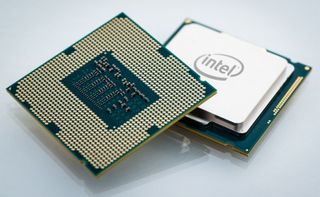Intel Meteor Lake CPUs could be more like Raptor Lake than we expected
Rumor suggests efficiency cores will get a new architecture, but maybe not performance cores

Intel’s Meteor Lake processors, which will follow next-gen Raptor Lake CPUs, are the subject of fresh speculation regarding how powerful these chips might turn out to be.
As Wccftech spotted, we’ve seen a couple of tweets appear on Meteor Lake, from Raichu (see below) and another renowned leaker Harukaze5719, the latter of which further points to rumors from Coelacanth Dream pertaining to info gleaned from Intel’s open source database.
1/xAbout Meteor lake.MTL focus on how to improve the efficiency of the instruction execution, it will not widen the microarchitecture crazy like Alder lake.May 18, 2022
The upshot is that based on digging around for model IDs for the cores of Intel’s CPUs, it seems that the move from Raptor Lake to Meteor Lake will involve an all-new architecture for efficiency cores, but not for performance cores (stick your finest skeptical hat on here, of course, as this is just a rumor).
As you’ll doubtless recall, with current-gen Alder Lake, Intel switched to use hybrid tech with a mix of these two different types of cores in its processors. Performance cores are standard (full-power) cores, whereas efficiency cores are, as the name suggests, less performant cores which are designed for power-efficiency.
What this means is that while the efficiency cores will benefit from a whole new redesigned architecture, the performance cores – which are known as Redwood Cove for Meteor Lake – could essentially be just another refinement to Alder Lake’s performance cores (Golden Cove, which will be honed to become Raptor Cove in the next-gen CPUs).
Analysis: Expect more multi-core grunt and efficiency, then?
What does this mean for those thinking about waiting for Meteor Lake, which represents Intel’s drop down to 7nm finally (and will require a new socket and motherboard, which next-gen Raptor Lake won’t, as the latter is simply a refresh of Alder Lake)?
Well, as Raichu explains in the above Twitter thread, Intel may not be introducing any revolutionary architectural changes at a fundamental level with Meteor Lake’s performance cores, but Team Blue will still be doing plenty to pep up how powerful these cores are. Like working on improving the overall efficiency of executing instructions, branch prediction, and other technical bits and pieces to mean faster performance for the end user, even if these cores aren’t built on a new architecture.
Get daily insight, inspiration and deals in your inbox
Get the hottest deals available in your inbox plus news, reviews, opinion, analysis and more from the TechRadar team.
On the other hand, efficiency cores will be rebuilt from the ground up with a new architectural take, although of course, this is all just theorizing and should be taken with a hefty amount of seasoning.
As Raichu envisages, this could mean 14th-gen processors won’t be upping the stakes massively with single-core performance and clock frequencies compared to Raptor Lake, and instead what we’ll get is more oomph to provide better multi-core performance, and power efficiency improvements.
That tack and focus on multi-core going forward also makes sense in light of other rumors which have already pointed to Intel keeping on with its current strategy for Raptor Lake of major increases with the efficiency core count (with performance cores sticking at a maximum of eight).
As to when we’ll actually see a new architecture for Intel’s performance cores – which are, after all, the main cores capable of doing a lot more heavy lifting – that won’t happen until Lion Cove, the rumor mill reckons, which will be part of Arrow Lake, the following (15th) generation after Meteor Lake.
Darren is a freelancer writing news and features for TechRadar (and occasionally T3) across a broad range of computing topics including CPUs, GPUs, various other hardware, VPNs, antivirus and more. He has written about tech for the best part of three decades, and writes books in his spare time (his debut novel - 'I Know What You Did Last Supper' - was published by Hachette UK in 2013).
Most Popular

